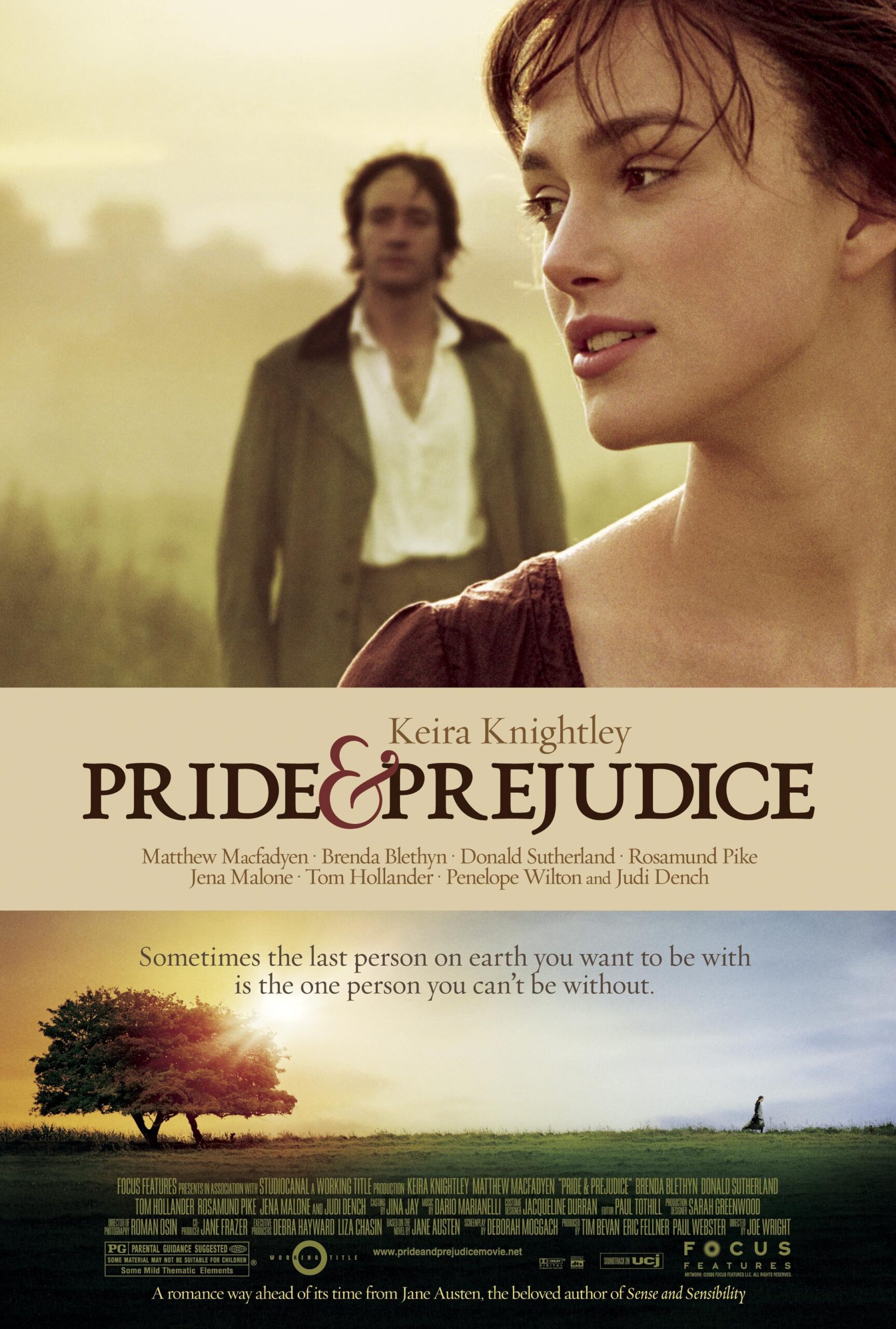How did Jane Austen’s iconic novel “Pride and Prejudice” fair in its transition to the big screen? Photo from imbd.com.
What if I told you that some of Jane Austen’s most famous quotes are ones she never even wrote? Well, that’s what I’m telling you now.
It seems that a lot of the time, the beauty of a novel is lost when it gets adapted into a film, but the opposite can be argued for Jane Austen’s most famous novel, “Pride and Prejudice.” The novel tells the story of Elizabeth (Lizzy), the second daughter of the Bennet family and her enemies-to-lovers relationship with Mr. Darcy.
Lizzy and Darcy meet at a ball and immediately fall into hate with each other as Darcy denies a dance with Lizzy, stating she is not handsome enough to make his acquaintance. The two silently and politely fight for the rest of the story until the day that Darcy realizes he loves Lizzy and tells her. She denies this but eventually gives in to the love she has grown for him and the two end up together in the end.
The thing about romance back in the 1800s is that two people could be completely in love with each other, but the physicality of it would in no way compare to what we see in romance novels and movies today. There are multiple proposals and love confessions in the book that are written in letters or seem almost dull said out loud, but the 2005 film adaptation of the novel, starring Kiera Knightley and Matthew Macfadyen, takes those 19th century-appropriate moments and makes them appealing to our 21st-century eye.
There are two great examples of this. “Pride and Prejudice” is well known for Darcy’s confession of love for Lizzy in which he says, “You must allow me to tell you ardently I admire and love you.” But, Hollywood’s spin on the scene created a quote that is just as well known, “You have bewitched me body and soul, and I love, I love, I love you.”
It’s quotes like this that leave audiences longing for the days when love was expressed in letters and through poems. And since love or even sexual tension wasn’t dealt with so blatantly back then, the 2005 adaptation does an excellent job of showing intention through every scene that Darcy and Lizzy share.
This constant intention to explore the beyond in their relationship is shown through beautifully-effective close-ups and lingering shots of Darcy and Lizzy’s hands; when he helps her into the carriage, as he watches her write and more.
And by the end, after a few confessions and a lot of tense moments, the 2005 adaptation gives the audience a scene that readers would otherwise not get to experience. After their proposal is confirmed they sit by the sea and Darcy asks what he should call Lizzy after she tells him not to call her “my dear.” He suggests “Mrs. Darcy,” to which Lizzy replies, “You may only call me Mrs. Darcy when you are completely, and perfectly and incandescently happy.”
It’s the perfect movie ending to a romantic classic (with the outwardly-shown love we expect from a romance movie today).

